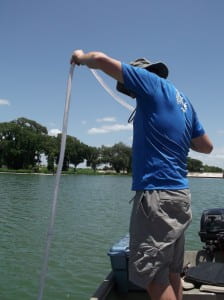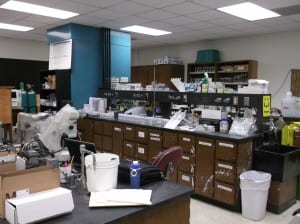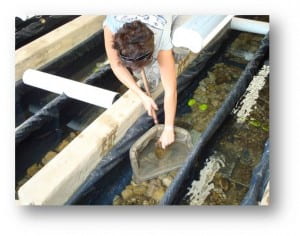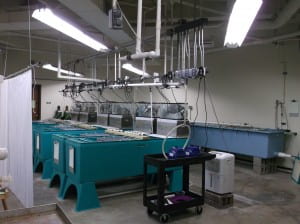Texas State University is fortunate to have excellent facilities on campus and access to a large number of field sites close by. Students and collaborators have utilized these facilities and sites to produce cutting-edge research and publications.
Field Sites
Much of our field work is conducted in central and west Texas rivers and reservoirs. The headwaters of the San Marcos River (Spring Lake) and the upper river are located within the Texas State University campus. The San Marcos system is a spring-fed river system that contains multipl e threatened and endangered species. Texas State University is also located within a short drive of multiple river (e.g., Blanco, Guadalupe, and Comal) and reservoir (e.g., Canyon, Dunlap) systems. In addition, the University owns and operates the Freeman Ranch, an educational and research-oriented facility that contains part of the recharge area and contributing surface drainage for Spring Lake.
e threatened and endangered species. Texas State University is also located within a short drive of multiple river (e.g., Blanco, Guadalupe, and Comal) and reservoir (e.g., Canyon, Dunlap) systems. In addition, the University owns and operates the Freeman Ranch, an educational and research-oriented facility that contains part of the recharge area and contributing surface drainage for Spring Lake.
Lab and Experimental Facilities
The Nowli n lab is located within the Freeman Aquatic Biology Building (the Aquatic Station) on the Texas State University campus. The lab contains two CE Elantech CN analyzers, two Dionex ion chromatographs, a Shimadzu TOC analyzer, an Agilent Cary UV-Vis scanning spectrophotometer, a Milli-Q water system, analytical microbalances, and a Beckman liquid scintillation counter. The lab also contains
n lab is located within the Freeman Aquatic Biology Building (the Aquatic Station) on the Texas State University campus. The lab contains two CE Elantech CN analyzers, two Dionex ion chromatographs, a Shimadzu TOC analyzer, an Agilent Cary UV-Vis scanning spectrophotometer, a Milli-Q water system, analytical microbalances, and a Beckman liquid scintillation counter. The lab also contains  several high-quality dissection scopes, drying ovens, a muffle furnace, refrigerators/freezers, and an incubator.
several high-quality dissection scopes, drying ovens, a muffle furnace, refrigerators/freezers, and an incubator.
The Freeman Building also contains a wet lab, a covered outdoor experimental stream channel facility,and the Edwards Aquifer Research and Data Center. The Department of Biology has multiple small and medium-sized boats and a fleet of field vehicles.

